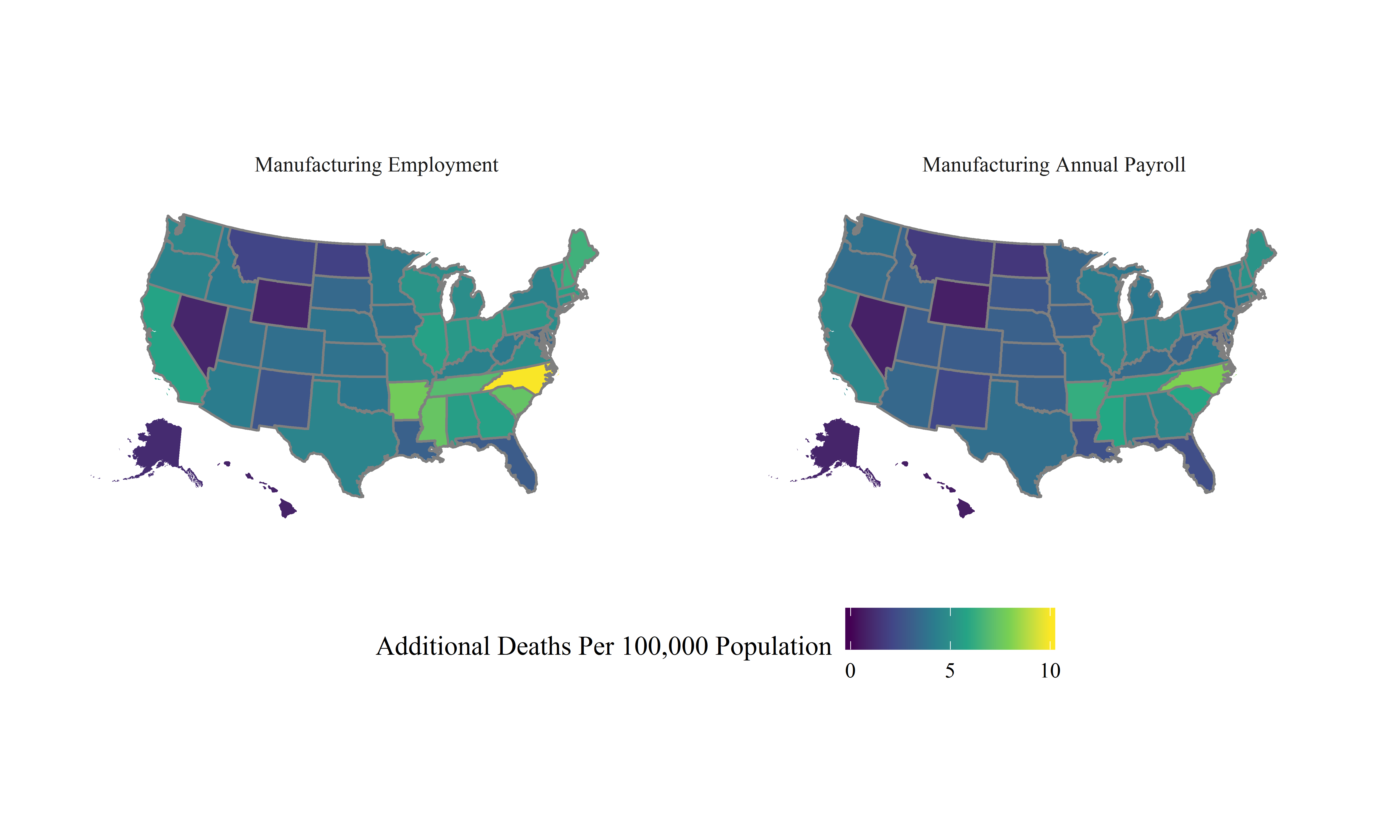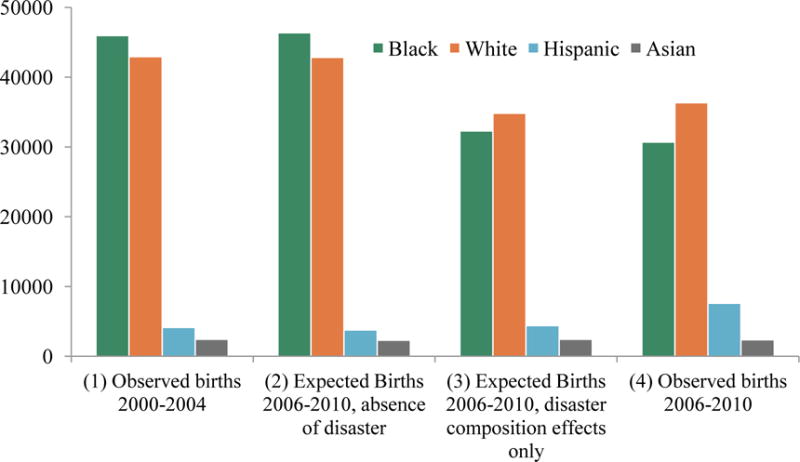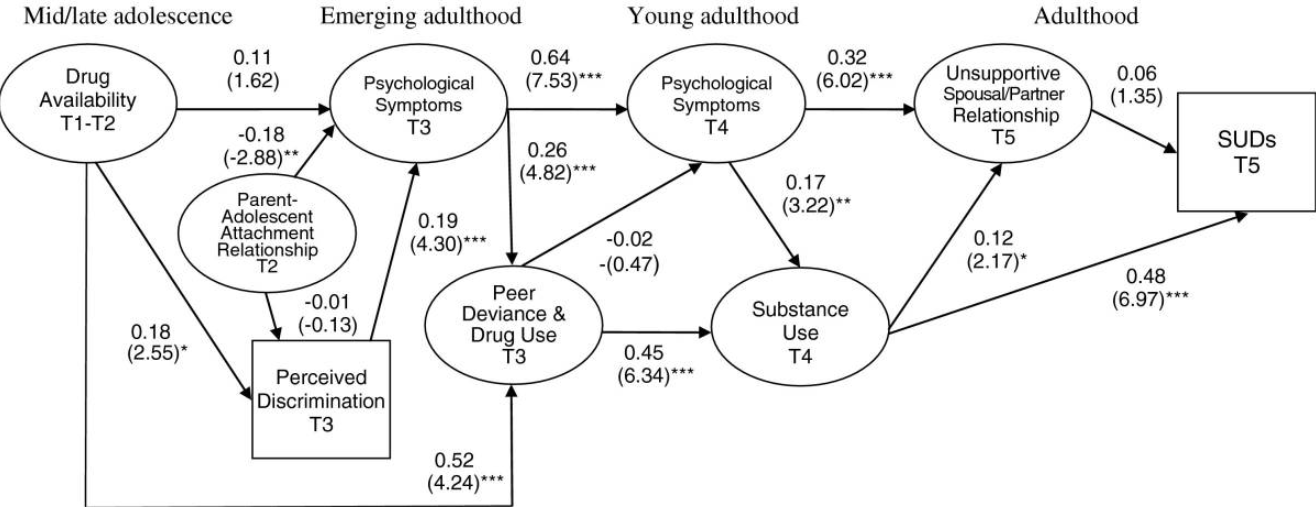Research
My research investigates the social and demographic consequences of deindustrialization. The U.S. labor market has undergone an industrial restructuring over the past half century that has fundamentally reshaped the occupational profile of the American middle class. However, the potential implications of this ongoing transition to a service-based economy on social and demographic processes remain largely unexplored. I draw on theories of economic change, including labor market polarization and precarious work, as well as sociological perspectives on the life course to examine how structural changes in U.S. labor markets have altered population processes and population health outcomes, reduced upward mobility, and created new fronts of inequality.
My work relies on many forms of data, including administrative and vital statistics records, geospatial data, survey data, and computational simulations. I have also written about data quality issues accompanying online survey recruitment tools.
My research centers around four major domains:
2. Economic Opportunity and Population Health

2. Economic Opportunity and Population Health
The Economic Underpinnings of the Drug Epidemic [article]
[pre-print]
Nathan Seltzer
SSM - Population Health, Forthcoming
- Abstract U.S. labor markets have experienced transformative change over the past half century. Spurred on by global economic change, robotization, and the decline of labor unions, state labor markets have shifted away from an occupational regime dominated by the production of goods to one characterized by the provision of services. Prior studies have proposed that deterioration of employment opportunities may be associated with the rise of substance use disorders and drug overdose deaths, yet no clear link between changes in labor market dynamics in the U.S. manufacturing sector and drug overdose deaths has been established. Using restricted-use vital registration records between 1999-2017 that comprise over 700,000 drug deaths as well as data on opioid-related hospitalizations, I test two questions. First, what is the association between manufacturing decline and drug overdose mortality rates and opioid-related hospitalizations? Second, how much of the increase in these drug-related outcomes can be accounted for by manufacturing decline? The findings provide strong evidence that restructuring of the U.S. labor market has played an important upstream role in the current drug crisis. 93,000 overdose deaths for men and up to 34,000 overdose deaths for women are attributable to the decline of state-level manufacturing over this nearly two-decade period. These results persist in models that adjust for other processes changing at the same time, including the supply of prescription opioids. Critically, the findings signal the value of policy interventions that aim to reduce persistent economic precarity experienced by individuals and communities, especially the economic strain placed upon the middle class.
Structural Racism as a Fundamental Cause of Racial Health
Disparities: Evidence from U.S. Localities [article]
Rourke O’Brien, Tiffany Neman, Nathan Seltzer, Linnea Evans, and
Atheendar Venkataramani
SSM - Population Health, 2020
- Abstract Racial disparities in health cannot be fully explained by differences in socioeconomic status (SES). This motivates consideration of racism as a fundamental cause of health disparities. In this research note we introduce the ‘racial opportunity gap’ as a holistic, place-based measure of structural racism for use in population health research. We first detail constructing the opportunity gap using race-sex specific estimates of intergenerational economic mobility outcomes for a recent cohort. We then illustrate its utility in examining spatial variation in the racial mortality gap. First we demonstrate a correlation between the racial opportunity gap and the racial mortality gap across U.S. counties; where the gap in the adult earnings of black and white children born to families at the same income level is greater so, too, is the gap in mortality. Second, we show in a multivariate framework that the racial opportunity gap is associated with the racial mortality gap net of differences in the socioeconomic composition of the two groups. In so doing, we aim to provide population health researchers with a new empirical tool and analytic framework for examining the role of structural racism in generating racial health disparities both through and independent of SES.
Intergenerational Mobility and Disability |
In Preparation
Nathan Seltzer, Tiffany Neman, and Rourke O’Brien
- Abstract This project examines whether spatial variation in economic opportunity—operationalized using place-based estimates of intergenerational economic mobility for a recent cohort—can help us account for variation in disability across counties and within counties over time. Specifically, this project examines two key research questions: (1) Is there an association between local area economic opportunity, self-reported disability status and receipt of Federal disability assistance (SSI and SSDI)? and (2) Does local area economic opportunity moderate the relationship between unemployment, self-reported disability status, and receipt of SSI/SSDI? We find that areas characterized by low economic opportunity have higher rates of self-reported disability and disability assistance receipt, net of local area sociodemographic and economic characteristics. We find evidence that economic opportunity moderates the relationship between business cycle dynamics and disability; following an increase in unemployment, self-reported disability rates and receipt of SSDI increase more in low opportunity areas relative to high opportunity areas.
3. Natural Disasters and Population Dynamics

3. Natural Disasters and Population Dynamics
Post-Disaster Fertility: Hurricane Katrina and the Changing
Racial Composition of New Orleans [article]
[pubmed]
Nathan Seltzer and Jenna Nobles
Population and Environment, 2017
Press: [Washington
Post]
- Abstract Large-scale climate events can have enduring effects on population size and composition. Natural disasters affect population fertility through multiple mechanisms, including displacement, demand for children, and reproductive care access. Fertility effects, in turn, influence the size and composition of new birth cohorts, extending the reach of climate events across generations. We study these processes in New Orleans during the decade spanning Hurricane Katrina. We combine census data, ACS data, and vital statistics data to describe fertility in New Orleans and seven comparison cities. Following Katrina, displacement contributed to a 30% decline in birth cohort size. Black fertility fell, and remained 4% below expected values through 2010. By contrast, white fertility increased by 5%. The largest share of births now occurs to white women. These fertility differences—beyond migration-driven population change—generate additional pressure on the renewal of New Orleans as a city in which the black population is substantially smaller in the disaster’s wake.
Finding and Characterizing the Displaced: A Method Using
Administrative Data [working
paper]
Jenna Nobles and Nathan Seltzer
- Abstract In the aftermath of environmental disaster, documenting the welfare of affected populations serves goals in both policy and science arenas. Population displacement makes this task difficult, and sometimes impossible. We propose a method to document the welfare of the displaced that is inexpensive, quick-to-implement, and available whenever administrative data systems are minimally disrupted in areas neighboring sites of disaster or conflict. We use a series of Monte Carlo simulations to demonstrate when the method can be used. These simulations incorporate several varying dimensions, including disaster effect size, heterogeneity, and spillover; patterns of displacement; and features of the data available to the researcher. To further demonstrate the value of the approach, we apply the method to provide estimates of the impact of Hurricane Katrina on birth outcomes among displaced Gulf Coast residents.
4. Early Childhood and Adolescent Outcomes

4. Early Childhood and Adolescent Outcomes
I worked for several years in a psychosocial research lab at New York University School of Medicine before starting work on my M.A. and Ph.D. degrees. These are public health oriented research studies that I worked on during this period.
Insomnia in Adults: The Impact of Earlier Cigarette Smoking from Adolescence to Adulthood [article]
Judith Brook, Chenshu Zhang, Nathan Seltzer, and David Brook
Journal of Addiction Medicine, 2015Adolescent ADHD and Adult Physical and Mental Health, Work Performance, and Financial Stress [article]
Judith Brook, David Brook, Chenshu Zhang, Nathan Seltzer, and Stephen Finch
Pediatrics, 2013Adult Work Commitment, Financial Stability, and Social Environment as Related to Marijuana Trajectories Beginning in Adolescence [article]
Judith Brook, Jung Yeon Lee, Stephen J. Finch, David W. Brook, and Nathan Seltzer
Substance Abuse, 2013Longitudinal Determinants of Substance Use Behaviors [article]
Judith Brook, Jung Yeon Lee, Elizabeth Rubenstone, Stephen J. Finch, Nathan Seltzer, and David Brook
Journal of Urban Health, 2013Personality Characteristics in the Mid-Forties Predict Women’s Smoking Cessation in their Mid-Sixties [article]
Judith Brook, Chenshu Zhang, Elinor Balka, Nathan Seltzer, and David W. Brook
Psychological Reports, 2013
1. Social and Demographic Consequences of Deindustrialization
1. Social and Demographic Consequences of Deindustrialization
Beyond the Great Recession: Labor Market Polarization and Ongoing Fertility Decline in the United States [article] [pre-print]
Nathan Seltzer
Demography, 2019
Unequally Insecure: Rising Black/White Disparities in Job Displacement, 1981-2017 [working paper - Washington Center for Equitable Growth]
Elizabeth Wrigley-Field and Nathan Seltzer
Manufacturing Decline and Intergenerational Income Mobility [working paper] | Under Review
Nathan Seltzer